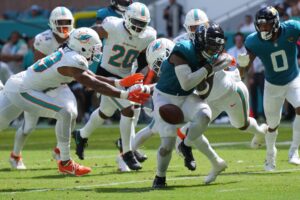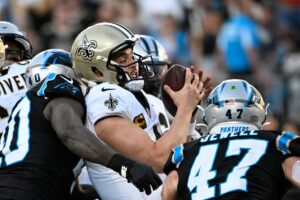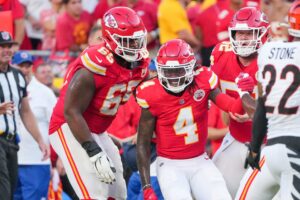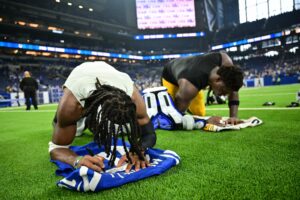As we make our way through the NFC North in our newest series,”The Breakdown,” we take a look at the Minnesota Vikings schematic philosophy. The Vikings suffered a devastating loss prior to last season, losing starting quarterback Teddy Bridgewater to a torn ACL and further structural damage; the injury sidelined him for the entire 2016 campaign, and many feared it could even keep him out of the 2017 season. Let’s take a look at the Vikings’ structure on both sides of the ball.
The Breakdown: A Look at the Minnesota Vikings Schematic Philosophy
Implementing New Wrinkles
New offensive coordinator Pat Shurmur was an assistant for Andy Reid‘s Philadelphia Eagles from 1999-2008 and later Chip Kelly’s offensive coordinator from 2013-2015.
It’s safe to assume Shurmur’s base offense will be entrenched in Reid’s former roots as the additions of free agent left tackle Riley Reiff (who has spent time in Detroit’s zone blocking scheme), 2017 third-round center Pat Elflein and second-round running back Dalvin Cook are representative of the ball-control, ZBS offense. With his time under Kelly, expect to see more four and five-wide sets as opposed to the two and three-receiver sets they operated from on 86 percent of their snaps in 2016. Stefon Diggs has grown into a budding star, Adam Thielen has developed into a reliable number two, 2016 first-rounder Laquon Treadwell should continue to progress, while the franchise spent fifth- and seventh-round picks on Rodney Adams and Stacy Coley respectively.
With the marriage of both systems comes the integration of a variety of blocking schemes that Cook is best-suited for. Florida State incorporated man, gap and zone schemes that he thrived in with his slashing style, but the Vikings offensive line was built around former back Adrian Peterson, a downhill bruiser who saw a litany of runs between the tackles. This is a result of bigger, stronger linemen adept at generating movement and knocking out double teams as opposed to working on the move. A strong line like such was also a direct extension of Norv Turner‘s vertical, deep-dropback passing game that asked his pass protectors to hold their duties longer than the usual offense.
Expect many of the simplified reads to stick in Minnesota. The use of move-the-pocket throws, half-field reads and quick-hitting screens are efficient ways to keep an offense on-schedule and get their best athletes in space. Expect Diggs to see more snaps as the X-option with Thielen seeing an increased workload from the slot.
The Mike Zimmer Defense
Minnesota was a middle-of-the-road team defensively last season, but Zimmer has developed a very effective system. It’s no secret that the foundation of his system is the double-A-gap blitz which does a superb job of opening up one-on-one pass-rushing scenarios and efficiently disguising coverage drops. The bevy of second-and third-level blitzes have called for speed at the positions (linebacker and safety) in order to cover the amount of ground they’re tasked with in rotations and disguises. Generally, a middle linebacker and an outside linebacker rush right through the A-gaps between the center and either guard in this base blitz. Where Zimmer puts his touch on it and becomes increasingly effective is having two linebackers rush from depth or start at the line to create a six-man blitz look, only to have one drop back into coverage.
Many of Zimmer’s coverage looks are run from split-safety looks, resulting in cover 2, quarters and Tampa 2 calls. One of the most noticeable aspects of their run defense is how well they defend the middle of the field and look to spill runs right to their corners along the perimeter. But it makes sense: two-high shells leave defenses with seven-man boxes. This directly plays into why Zimmer prefers versatility in his defensive backs. They must be adept at both defending the run, disrupting releases and making plays down the field while Zimmer’s reliance on his quarters coverage stems from how well his safeties can defend the seams.
It’s obvious that the Vikings’ success is dependent on what their quarterback situation will be this coming season-whether that be Bridgewater or Sam Bradford. They certainly have the talent to challenge for the top spot in the division and make a run in the postseason, but everything is dependent on the level of production and efficiency they will get from the game’s most important decision.






